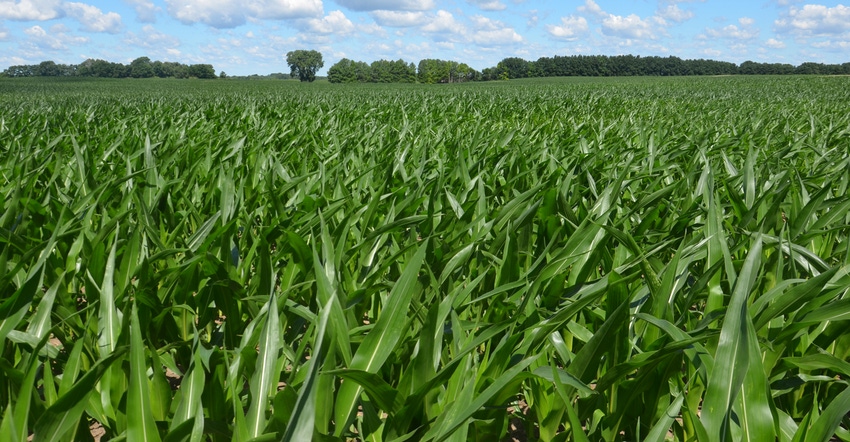May 24, 2022

From emergence to V10 leaf stage, which is about waist-high corn, it takes 85 to 90 growing degree days for each leaf to develop. However, after V10, corn plants pick up speed and add new leaves every 50 to 60 GDD. At this stage, corn grows so fast that you can almost see it happening.
Corn needs special attention during the following critical stages to produce higher yields:
Knee-high stage. A corn plant decides how many potential ears it can develop based on its macro- and microenvironment. Even with a great macroenvironment, the destiny of each individual plant will be determined by its microenvironment, including how crowded it is by other corn plants or weeds. If there is competition from neighbors, it may struggle to produce a good ear.
In previous Corn Watch fields, we’ve seen corn plants in outer rows with 10 to 12 ears, including the main stalk, tillers and tassel ears. They’re trying to make maximum use of their microenvironment, making as large a progeny as possible. In the same field, we saw plants with nubbins because of overcrowding due to double planting. This is an excellent example of the effect of microenvironment.
Waist-high stage. Each corn plant is already deciding how many rows of kernels it can put on at this stage. Kernel row number is always an even number and primarily is controlled by hybrid genetics. However, environmental factors such as plant density, water and nutrient availability, heat, and drought can influence row numbers. Still, they will always be in pairs. Depending on field conditions, a couple of rows may be added or subtracted from hybrid genetic potential.
Pollination stage. The most critical phase is pollination. Make sure insects like Japanese beetles or rootworm beetles, if you have conventional corn, are not clipping the silks. Check with your chemical dealer and use suitable insecticides to control these pests, if needed.
The pollination period is also crucial because it is when the corn plant determines how many viable kernels it can grow per ear. If it has sufficient water and plenty of nutrients, with temperatures in the mid-80s during the day and mid-60s at night, it may extend the ear length if it is a flex-eared hybrid. In my corn breeding years, I developed a couple of widely grown hybrids that combined the genetic qualities of both flex and girthy-eared hybrids. It is a rare combination and a plant breeder’s dream that requires extensive corn breeding, research and testing.
Individual plants can increase the number of kernels at the ear tips under favorable conditions. If conditions turn unfavorable, the first kernels a plant aborts will be tip kernels. However, it’s not unusual to see a small amount of blank cob at the tip in some hybrids.
Grain fill stage. Kernel size and weight are greatly influenced by conditions during grain fill in late summer after pollination wraps up. It’s important to continue scouting and guard against late-season disease pressure sneaking in unannounced. Intense, late-season disease outbreaks can end grain fill prematurely.
Nanda is director of genetics for Seed Genetics Direct, Jeffersonville, Ohio. Email [email protected] or call 317-910-9876. Please leave a message.
About the Author(s)
You May Also Like






